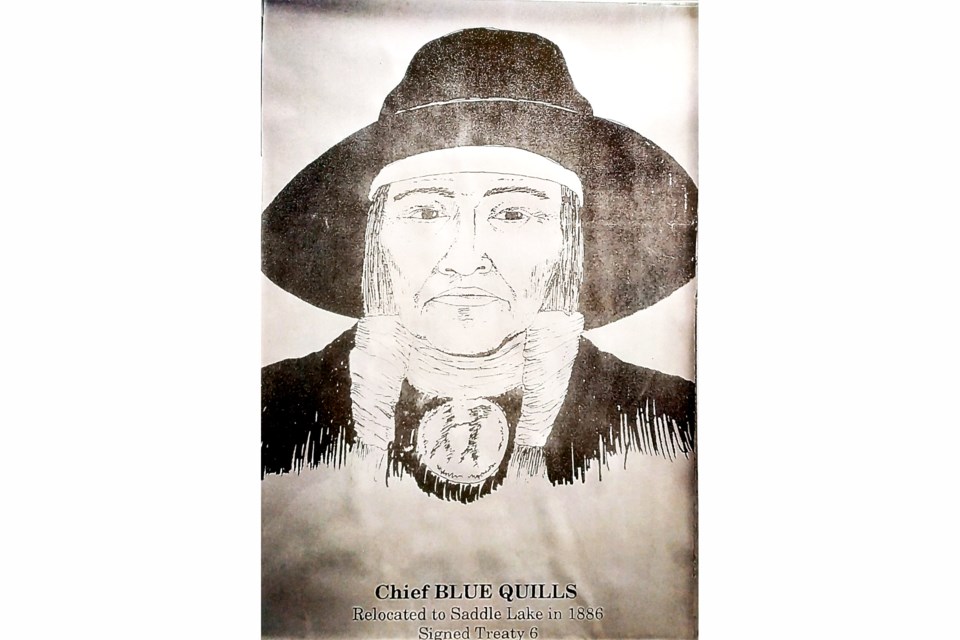ST. PAUL - Like many events planned over the past year and a half, an international conference that took place at University nuhelot’įne thaiyots’į nistameyimâkanak Blue Quills was forced to pivot and shift due to the COVID-19 pandemic. But, thanks to technology and dedication, the event was still able to bring people from all member territories of the World Indigenous Nations Higher Education Consortium (WINHEC) together, virtually.
The World Indigenous Research and Education Conference took place from July 5 to 9. Some on-site programming did take place, along with virtual participation as well.
"First, I want to acknowledge the incredible Blue Quills team for all of the planning this took as well as all of the work once the gathering started – it was a true team effort: mâmawohkamâhtowin," said Sherri Chisan, president of UnBQ, as the conference wrapped up. "This was an amazing gathering, hosting the world virtually at Blue Quills. Of course, we lost count of how many times someone said ‘We wish we could all be together,’ but we found ways to feel connected as a WINHEC family."
Participants from all of the member territories: Aotearoa, Alaska, Australia, Hawai’I, Sapmi, Taiwan, and continental USA were in attendance, and organizer juggled through 10 different time zones.
The conference started in ceremony with a grandmothers’ welcome to territory by nehiyaw and dene grandmothers, and there were also cultural openings each day from a different region of the world, "including the voices of all our relations," says Chisan.
Keynote speakers Linda Tuhiwai Smith, Debra Harry, and Buffy Ste Marie inspired participants, while workshop presenters shared the profound work they are doing in Indigenous knowledges and languages, focusing on the conference theme - We are land, language ceremony, and relationship.
On Wednesday, an awards ceremony was held, recognizing the work of people from across the globe. Among those awards was a posthumous award presented to Chief Blue Quill - the namesake of the university located just a few kilometres from St. Paul.
According to information from the UnBQ, "Chief Blue Quill (sîpihtakanep) was among the original four chiefs that were forced into an amalgamation to form Saddle Lake as a result of signing Treaty Six. Chief Blue Quill settled on the western end of Saddle Lake. The Chief was known as a compassionate man and the only chief of the four who agreed to a school to be built on his portion of the reserve."
“There were two religions at that time – Protestant and Catholic,” Elder Stanley Redcrow stated, as reported by the St. Paul Journal many years ago. “The Catholics went to school at Lac La Biche, and my father was one of those guys. When they went there, they never came back until they were 16 years old. At that time, the road was very bad. All they could use were dog teams."
The Federal Indian Department studied the school, and in 1898, moved it to the more populous Saddle Lake. Within a year, a pair of Oblate brothers had built and dedicated a church and school at Saddle Lake, with the help of the people. They called it Blue Quills.
According to Redcrow, “The government said they could build the school at a site, but when the Protestants saw those piles of lumber, they asked what we were doing. We said, ‘We’re going to build a school here.’ They said, ‘No, you’re not. After you pile the lumber we’ll put a match and burn it up.’ All four Saddle Lake Chiefs - Pakan, Onchaminahos, Blue Quill and Bears Ears - were of the Protestant faith. The Oblate fathers went to see Chief Blue Quill and told them they wanted to build a school. Alphonse Delver, a direct descendent, stated that Blue Quill responded to the request affirmatively, 'Yes, put it on my land. I’m thinking of the future of my grandchildren and the orphans'.”
William Delver, son-in-law married to Chief Blue Quill’s only child Nancy, saw the future of the grandchildren and great-grandchildren whom he said would live during a time when, “kipimâcihonâwâw ka-wehcasin. kinehiyâwiwinâwâw wî-âyiman ka-miciminamihk," which translates to: Earning a living will be easy. Being Cree will be hard to hold.
In 1931, the school was moved to its present location, two-and-a-half miles west of the Town of St. Paul. More than 90 years later, the brick building is still standing, the site of a First Nations owned and governed university. Descendants of Chief Blue Quill are among the students and faculty at the university.
Direct descendants of Chief Blue were on hand to accept the posthumous award. A drawing of Chief Blue Quill was also available for viewing at the event.
Awards handed out at the event include:
Chief of Indigenous Leadership
Dr. Peter Hanohano
Chief Blue Quill
Elders of Indigenous Wisdom
Pan Wan-Chin
Aing Banday
Uncle Stan Grant Snr
Scholars of Indigenous Knowledges
Distinguished Professor Marcia Langton
Ron Indian Mandamin
Service to Indigenous Education
Professor Clair Andersen
Professor Yuokko Hirvonen
Professor Ole Henrik Magga
Associate Professor Kristine Nystad
Associate Professor Onawa McIvor
Professor Paul Whitinui
Honourary Doctorates from the World Indigenous Nations University were presented to Buffy Ste Marie who attended virtually, Kathy Bird, Rhonda Hopkins (both in attendance in person from Ontario), along with Fred Kelly from Ontario, and Moses Dirks from Alaska, who both attended virtually.
There were also 24 posthumous Doctorates awarded to educational activists and leaders who were never publicly honoured for the work they did. The work makes it possible for the current generation to continue to do the work.



